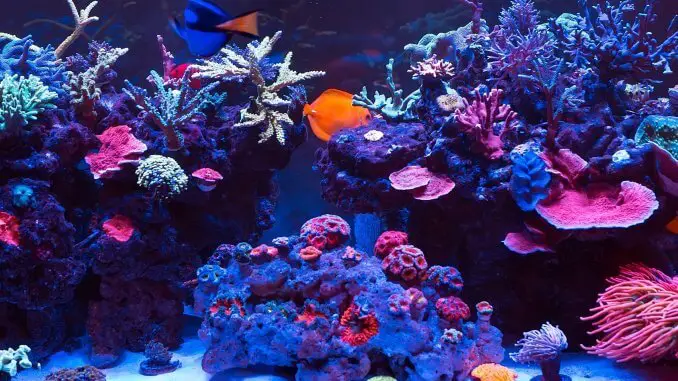
Setting up a new aquarium can be a daunting task, but it all becomes worth it once we have added our fish and are free to enjoy it.
There are many steps involved in turning a saltwater aquarium from an idea into reality. The process is similar to setting up a freshwater one.
Though a little more expensive, saltwater aquariums offer a wide range of colorful fish. Many people are tempted by the unique looks and behaviors of corals – which are not available for freshwater setups.
By mixing these different creatures, you can create a thing of beauty. Your tank will brighten up whichever room you put it in.
Saltwater aquariums are often thought to be hard to set up. We are here to show that this isn’t the case by walking you through everything you need to know when starting a new saltwater aquarium.
Saltwater Aquarium 101
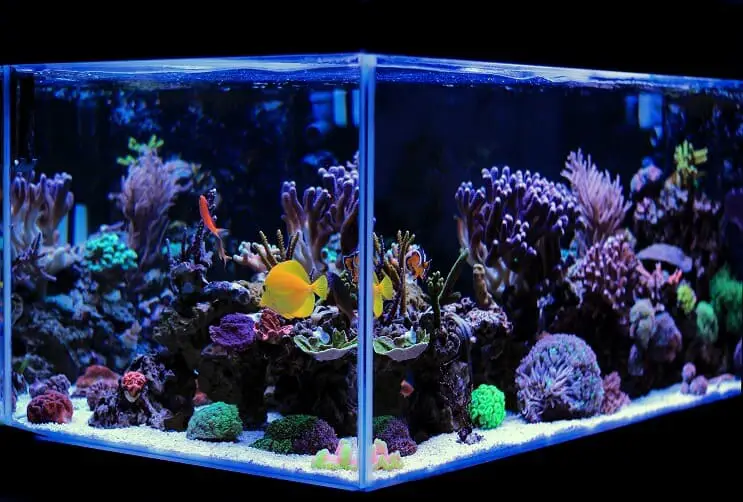
The first choice when starting a new aquarium is, freshwater or saltwater?
Each setup appeals in different ways to different people, so it can be difficult to choose one over the other.
A saltwater aquarium is simply a tank that contains marine animals and/or plants. There are lots of choices when starting a new one, so you can design it to suit you.
There is a unique range of marine creatures that draw people towards saltwater aquariums. Not only can you select from some of the most colorful fish in the world, but you can also add corals to create your very own reef.
If you have ever seen a natural reef, you will know how beautiful they are.
Beginners tend to shy away from saltwater setups because they are more expensive and difficult to maintain. While it is tough to get around the price, even beginners can maintain a healthy saltwater aquarium if they are willing to put in the time and effort.
Before you can enjoy your fish, you need to set everything up. Knowing how to set up a successful aquarium is crucial and will ensure that everything runs smoothly later on.
Types of Saltwater Tanks
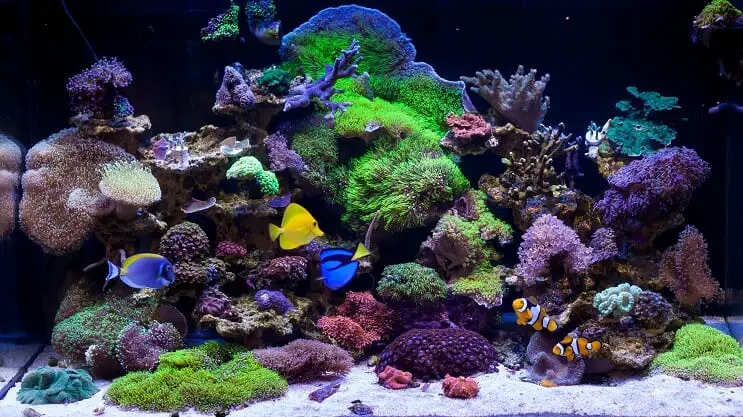
There is a lot you can do with a saltwater tank. If you need inspiration, here are a few of the main types of marine aquariums.
Fish Only
Fish are usually the main reason that someone gets an aquarium. If they are all you want, then why bother concerning yourself with anything else?
This is the most basic and cheapest type of tank. You only need to consider the requirements of your fish, and not of other potentially picky animals like corals.
You can choose between a species aquarium or a community aquarium.
Though the most basic, fish-only tanks aren’t necessarily the easiest to set up. Live rocks introduce more beneficial bacteria to the tank, so without live rocks, cycling the tank takes longer.
For the same reason, you might need to clean the aquarium more often, performing more water changes to maintain a high water quality.
Fish Only with Live Rock (FOWLR)
These tanks are the same as fish-only tanks, just with live rock.
As previously mentioned, live rocks are very helpful when setting up a new aquarium and can help to keep it clean, which saves you time.
They hold bacterial populations which break down ammonia and nitrites into the less toxic nitrate.
There aren’t many downsides to using live rock, the extra cost might deter some people but it’s not too expensive in the grand scheme of how much you have already spent on the aquarium. It should cost $5 for 1lb of live rock.
You might need to change the lighting in the aquarium for any photosynthetic organisms growing in the rock.
Reef Tank
Coral reefs are arguably the most attractive ecosystem in our oceans, possibly even on our entire planet. You might want to capture this beauty and make your own reef at home.
The main difference here is that you are keeping corals in your aquarium, which have their own needs. You can keep corals on their own or with some fish. This can be a challenging aquarium for beginners. Water quality and lighting are crucial for corals, it’s hard to maintain these and monitor parameters regularly.
Reef tanks are expensive too, as they often need extra equipment. The corals themselves can also be expensive.
Saltwater Aquarium Setup Complete Guide
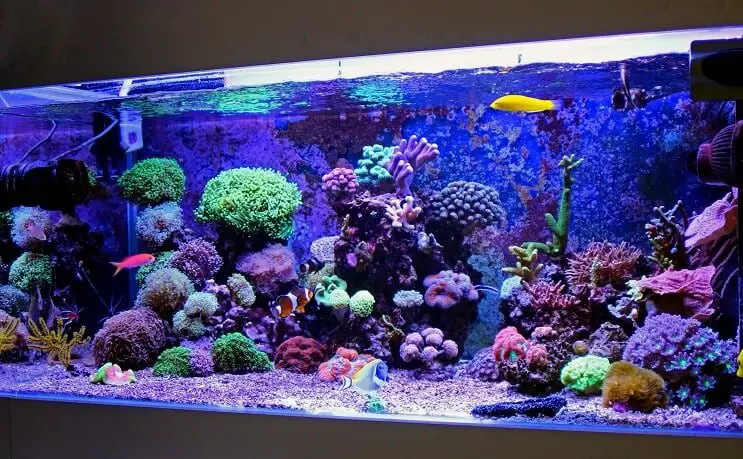
Setting up a saltwater aquarium is similar to setting up a freshwater tank and is simple if you know what you are doing.
1. Plan Your Tank
The first thing to do is plan – planning out your ideal setup thoroughly will help the whole process go smoothly. You should choose the type of fish/corals you want before sorting anything else, as this decision will influence the rest of the tank.
Your aquarium should be designed around your animals. What size tank do they need? What are their preferred water conditions? Do they need any specialist equipment?
Think about all of their requirements and your aquarium will start taking shape.
2. Prepare The Tank
Once you know what you need you can start to buy everything and get it ready. Even if your tank is brand new, it will need to be cleaned.
Never use soap or household cleaning products – you don’t want these getting in your tank. Just use a wet cloth to wipe away any dust or particles. The same goes for the rest of your equipment.
A used tank is a little harder to clean. Remove debris and use vinegar to clean the inside and outside. Acrylic tanks can scratch easily so you will need to use a specific type of cloth.
Now you need to check for leaks. Add a couple of inches of water and leave it for an hour – then look for signs of escaping water. Any leaks can be fixed with aquarium sealant.
Positioning
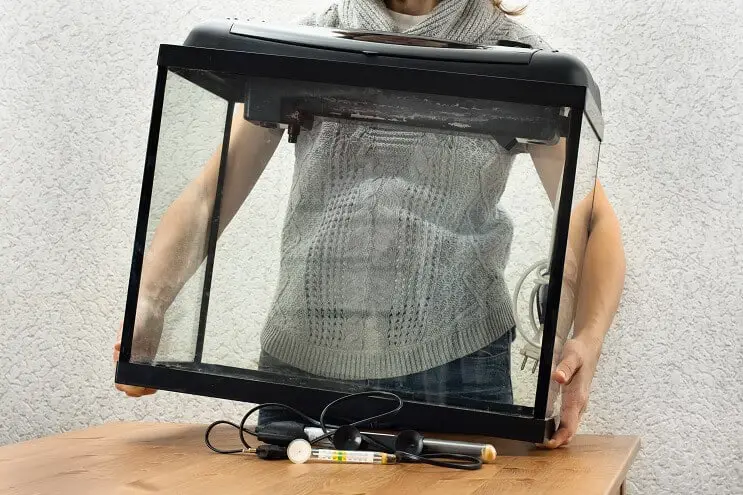
Before filling your tank, you need to position it. Make sure you are happy with where you are putting it because it will be much heavier and harder to move once it’s filled.
The surface you place the tank on needs to be strong enough to hold the weight of your filled aquarium. It also needs to be level (this can be checked with a spirit-level).
When you buy a new tank, you might get the option to buy a cabinet designed especially for the model you are getting. This is an easy, but more expensive way to ensure you have a suitable surface.
3. Add The Substrate
The time has come to start filling your tank, starting with the substrate. There are lots of different types – your fish might prefer some soft sands or maybe crushed corals, this should have come up in the planning stage.
Most people aim for between 1-2 inches of substrate at the bottom of the tank. Obviously, you will need to buy more substrate for a bigger tank. As a guideline, you will need 50-100lb of substrate in a 50-gallon tank.
Substrate comes from the shop covered in dust particles. It will need to be rinsed before being added to help keep your water clear.
Add small amounts to a bucket and run water through it. Mix everything with your hand until the water runs clear.
Gently place a thin layer along the bottom of your tank so you don’t scratch it, then you can pour the rest in. Arrange it how you like, you might want it consistently level or perhaps you would prefer some raised areas.
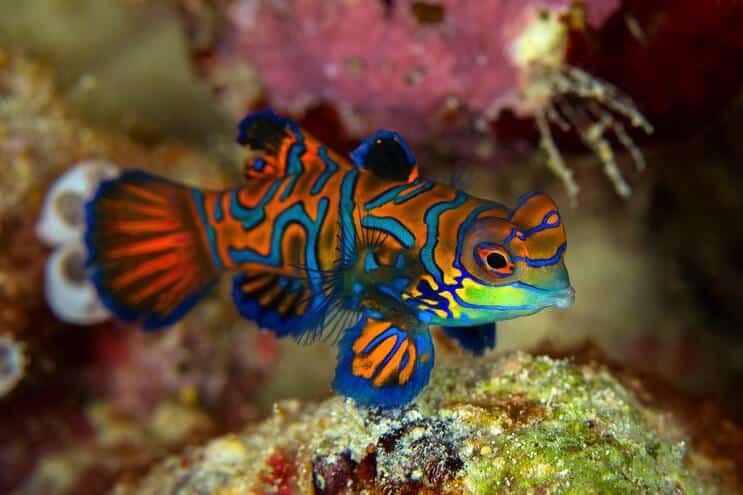
4. Add The Water
The next job is to pour in the water, but it will need a little preparation.
Your water must have been through reverse osmosis, you can buy water that’s already in this condition, or you can use treatments.
You will also need to mix in salt – you can buy aquarium salt mixes in pet stores, and the packet should indicate how much to use.
Now you just need to add some dechlorinator and the water is ready to go.
When adding the water, place a dish on the substrate and pour the water onto it. This will prevent your substrate from being disturbed.
5. Install Equipment
Nearly all saltwater aquariums need a filter, and most will need a heater. Some people might have additional pieces of equipment, like UV sterilizers, lights, protein skimmers, air stones, or automatic fish feeders.
All of these are added to the tank in this step. Most will be easy to install but filters can sometimes be confusing. There are lots of different types that will be installed differently, such as canister filters, gravel filters, and sponge filters.
Position your heater on one side of the tank and place a thermometer on the opposite side. This will reveal if the temperature you want is consistent through the tank.
6. Add Decorations
Plants and decorations allow you to get creative. This is where you turn the image in your head into reality.
Some people choose a natural design, mainly consisting of rocks, driftwood, and corals. Others enjoy theming their tank, perhaps around a shipwreck or a movie.
Rinse every item before you place it on the substrate to remove any dust.
7. Cycle the Tank
The tank is now fully set up, but it’s not safe for fish yet – you must cycle the tank.
Here the aim is to build up bacterial cultures to act as biological filtration. One culture will convert ammonia to nitrites, and another will convert nitrites to nitrates. This is important since ammonia and nitrite are toxic to fish. Nitrates are toxic in high quantities, this is why you perform partial water changes, to keep levels low.
Live rock is commonly used in saltwater tanks to kick off the cycle. These rocks hold already developed cultures of bacteria for you to add to your tank.
Choose light rocks as these will have lots of interior gaps, meaning a greater surface area for bacterial growth.
If live rocks don’t seem to be working, you can add ammonia to kick off the cycle.
Regularly test the water in the tank, ammonia levels should spike, followed by a spike in nitrites. Once these reach 0ppm, the cycle has finished. Do a 50% water change to reduce the buildup of nitrates.
The process should take 6-8 weeks. To speed it up, you could try raising temperature and oxygen levels or add filter media from an already established tank.
8. Add Fish
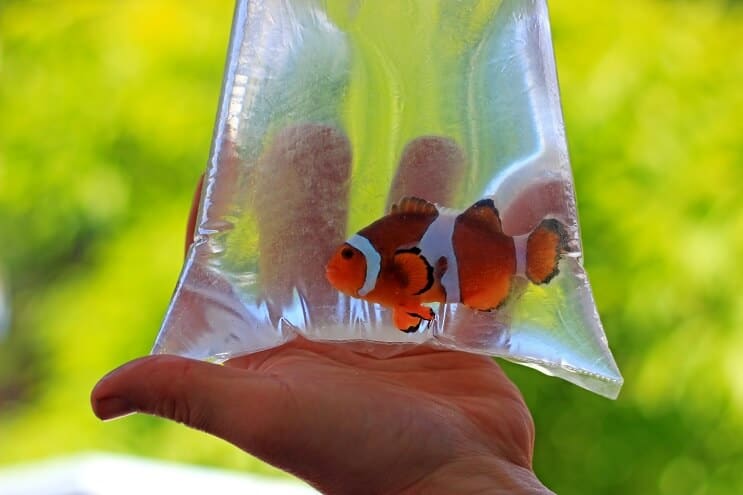
You are finally at the point where you can add some fish. Don’t add too many at once or you will risk starting the nitrogen cycle again. Slowly add them over a few weeks or even months.
Fish are sensitive to changes in water conditions, so once you have bought them you will need to gradually acclimatize them to the water in your tank.
Here are a few steps to acclimatize them:
- Turn off the aquarium lights.
- Float the bag on the water’s surface for 15 minutes to match the temperature of the tank to the temperature of the bag.
- Cut open the bag and roll down the top, making sure that it still floats on the surface.
- Add half a cup of aquarium water to the bag every 4-5 minutes until the bag is full.
- Pour out half the water in the bag, but not into the aquarium.
- Start adding half a cup of aquarium water every 4-5 minutes until the bag is full again.
- Use a net to transfer the fish from the bag to the aquarium, then discard the bag and water.
Watch your fish over the next 24 hours to check that they are healthy. Look to see if they are eating at feeding times. Some people like to quarantine new fish for a while before adding them to the main tank. This can help to prevent the introduction of disease.
Best Saltwater Aquarium Fish For Beginners

Typically, saltwater fish are usually a little weaker than their freshwater counterparts. However, you should not be discouraged, as there are still some hardy saltwater fish for beginners.
Beginners should look for small, hardy fish that aren’t aggressive. If fish meet these criteria, they should be easier to care for.
Probably the most popular marine fish available are Ocellaris Clownfish, made popular by the film Finding Nemo. Luckily, this is a hardy species that are great for beginners. An option for the lower levels of your tank is the Lawnmower Blenny. This herbivore hides in caves, only coming out to eat. They should be kept singly as they might nip other similarly sized fish.
The list goes on, including Chalk Bass, Coral Beauty Angelfish, Firefish, Klein’s Butterflyfish, Pajama Cardinalfish, Royal Gramma, and Six Line Wrasse.
There are lots of great fish, but there are also many that beginners should avoid. This is usually because they are sensitive to changes in water quality, or they are particularly aggressive.
For example, most Damselfish are very aggressive. They will claim an anemone as their territory, and defend it from other males that come near.
Finding the right species is all about research, you should choose your fish before you design the rest of your tank. This lets you design the tank around them, giving the fish everything they need.
Myths and Common Mistakes about Saltwater Aquariums
When researching saltwater aquariums you will find lots of people saying lots of different things. It can be difficult to determine what is true and what is just a myth.
- It is often said that beginners should not start with a saltwater aquarium. Marine fish are more sensitive to the quality of the water, so there is lower room for error, but this should not deter beginners. It’s all about designing the right saltwater tank. Starting a fish-only-with-live-rock (FOWLR) aquarium is the easiest option (we will discuss why later).
- Some people say that you can’t convert a saltwater aquarium into a freshwater aquarium. You actually can, if you make some adjustments. You need to drain the aquarium and wipe everything clean with chlorine-free water. All the salt needs to be removed before cycling the tank with freshwater.
- It’s commonly said that breeding saltwater fish is as easy as breeding freshwater fish. This is not true; it’s much harder to breed saltwater fish. Most saltwater species rely on seasonal cues to trigger spawning, and these are very difficult to recreate at home.
- The last myth we will mention here is that saltwater aquariums need to be bigger than freshwater ones. This is partially true. Dissolved oxygen in saltwater is just 80% that of freshwater, so it cannot support the same amount of biomass. This means that you can have a small saltwater aquarium, but it won’t be able to hold as many fish as a similarly sized freshwater one.
Frequently Asked Questions
How Do You Lower Nitrates In A Saltwater Aquarium?
The simplest way to lower nitrates is through 20% water changes. Water with high nitrates is replaced with water containing low nitrates. Performing a series of water changes will gradually lower nitrates.
To avoid this problem in the first place, perform regular water changes every 1-2 weeks as general maintenance.
How Do You Raise Ph In A Saltwater Aquarium?
The most likely reason for low pH is excess carbon dioxide.
Perform a water change and add one teaspoon of baking soda for every gallon of replacement water.
Add the water gradually over an hour. You may have to repeat the process the next day if pH does not rise enough originally.
Summary
A lot of thought goes into starting a new tank, especially saltwater aquariums. The most important part is planning. If you plan poorly, you are bound to run into problems down the road.
Think about which animals you want to keep, and then you can consider things like the aquarium size, equipment, and decorations. Once everything is planned, setting the tank up is relatively simple.
Cycling can take a while, but once you can start adding your fish, you will realize the wait was well worth it. The hardest part is maintaining the tank – you learn this through a mixture of research and practice. Beginners should pick hardy fish when they start out.
The marine environment holds some of the most attractive creatures on our planet. Bringing them into your home creates a true spectacle.
What is in your saltwater aquarium? Let us know in the comments section below…

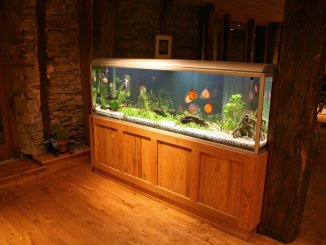

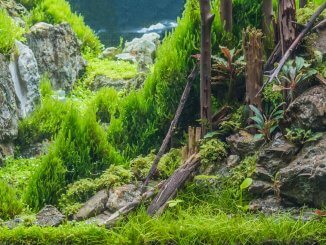
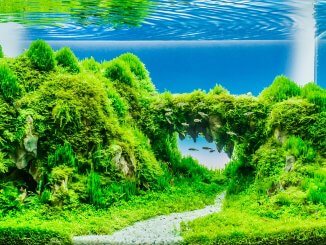
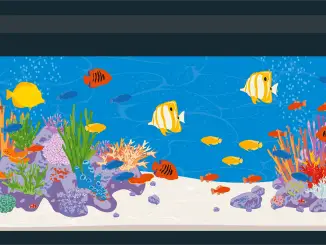
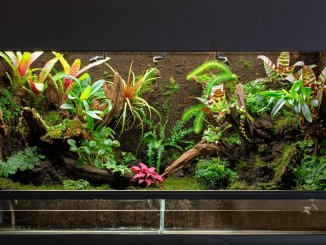
Be the first to comment